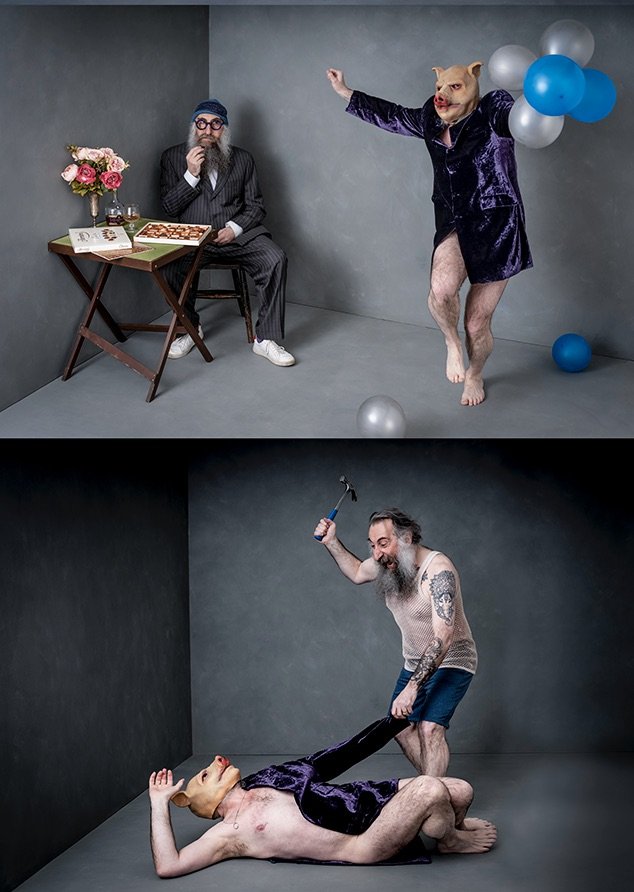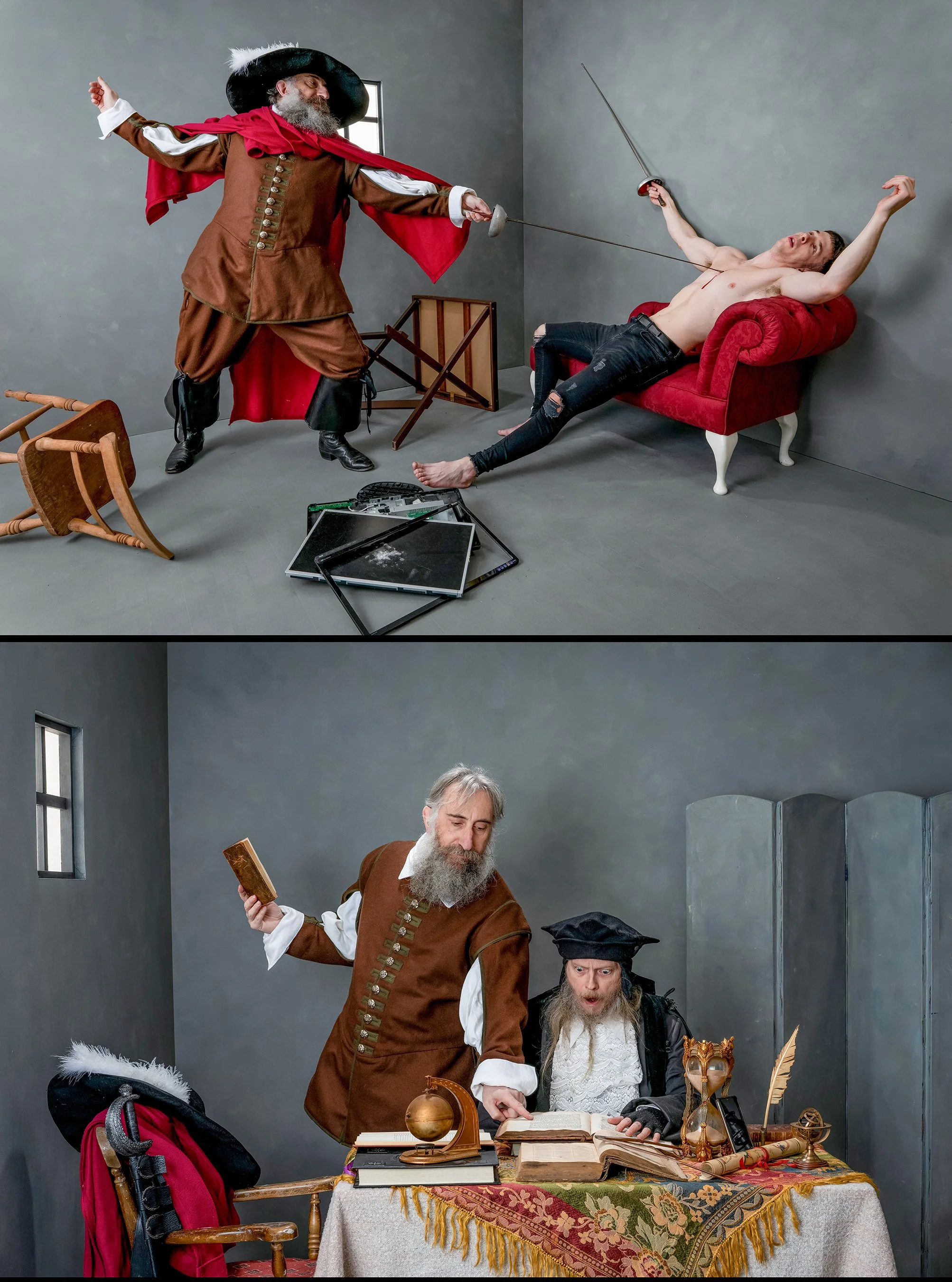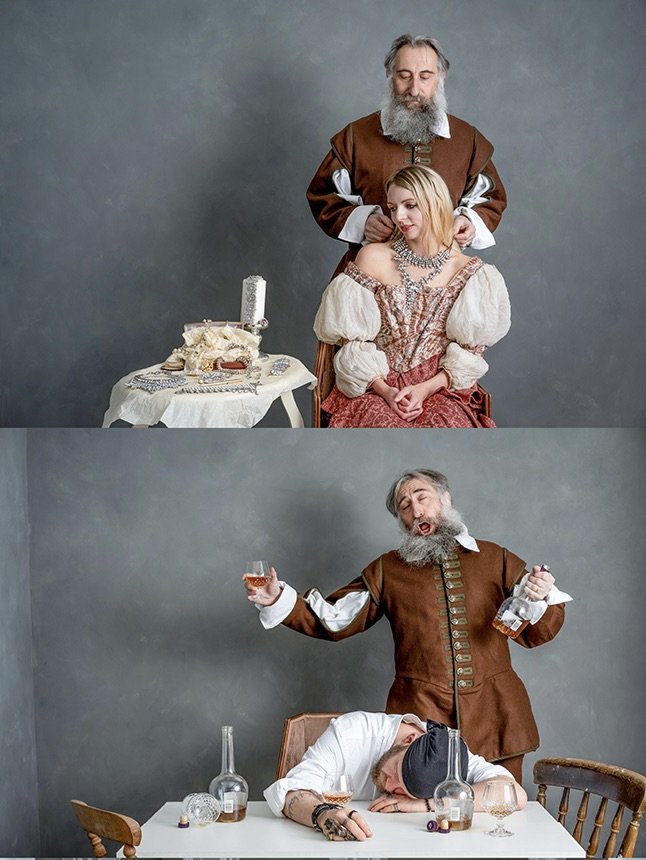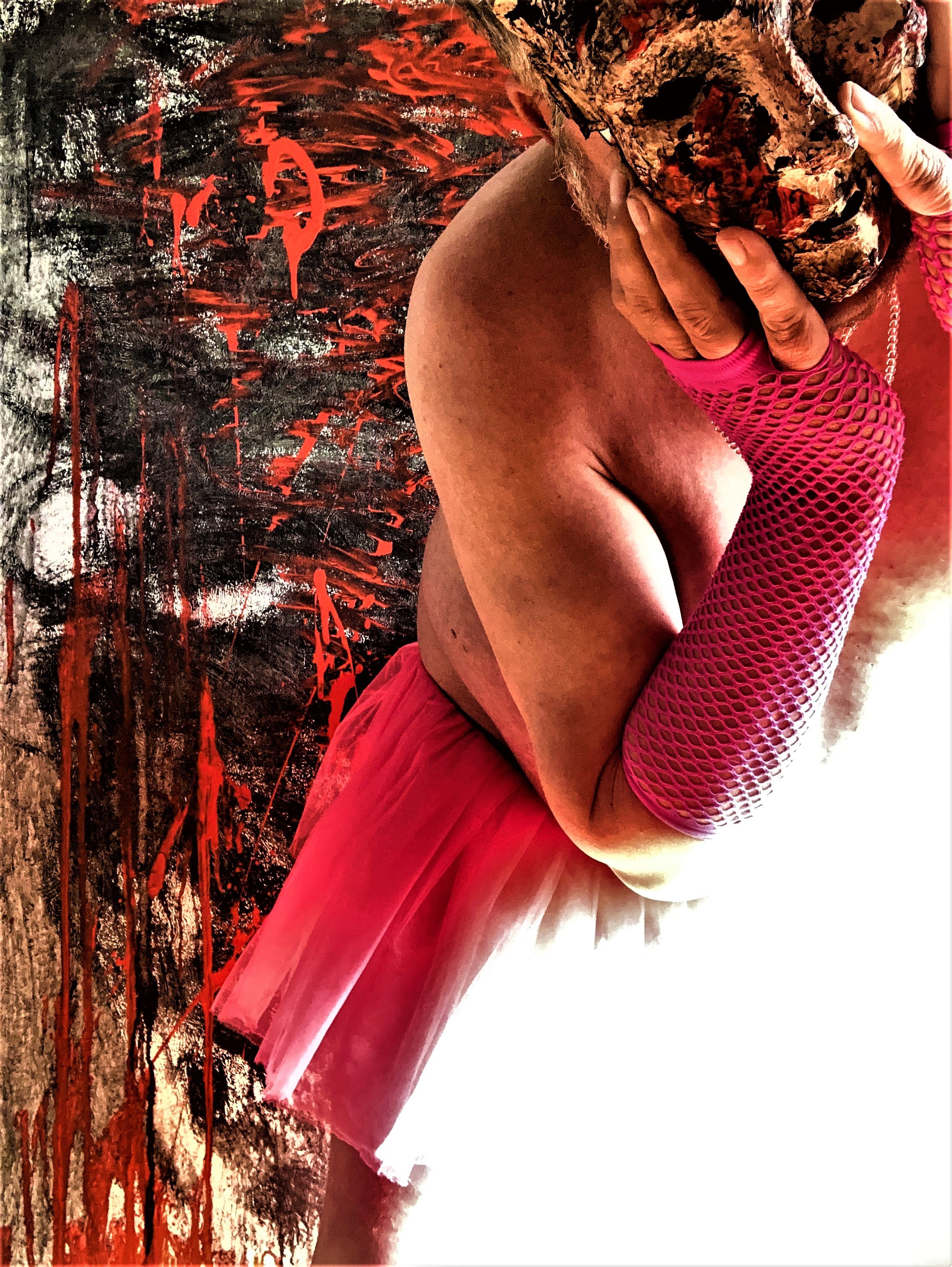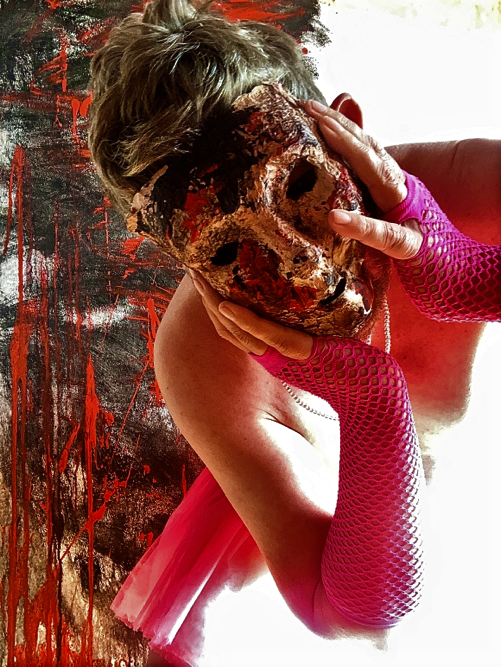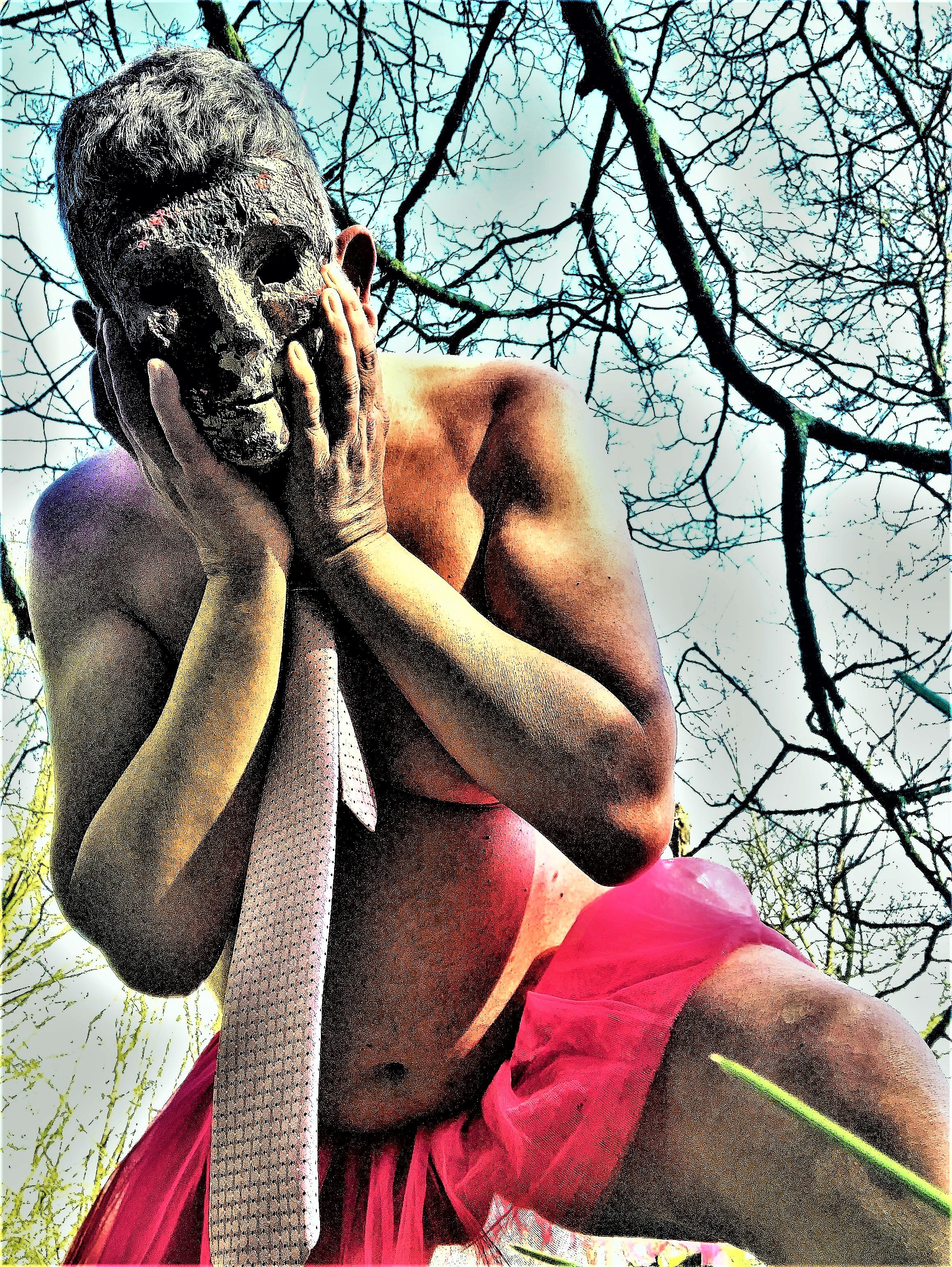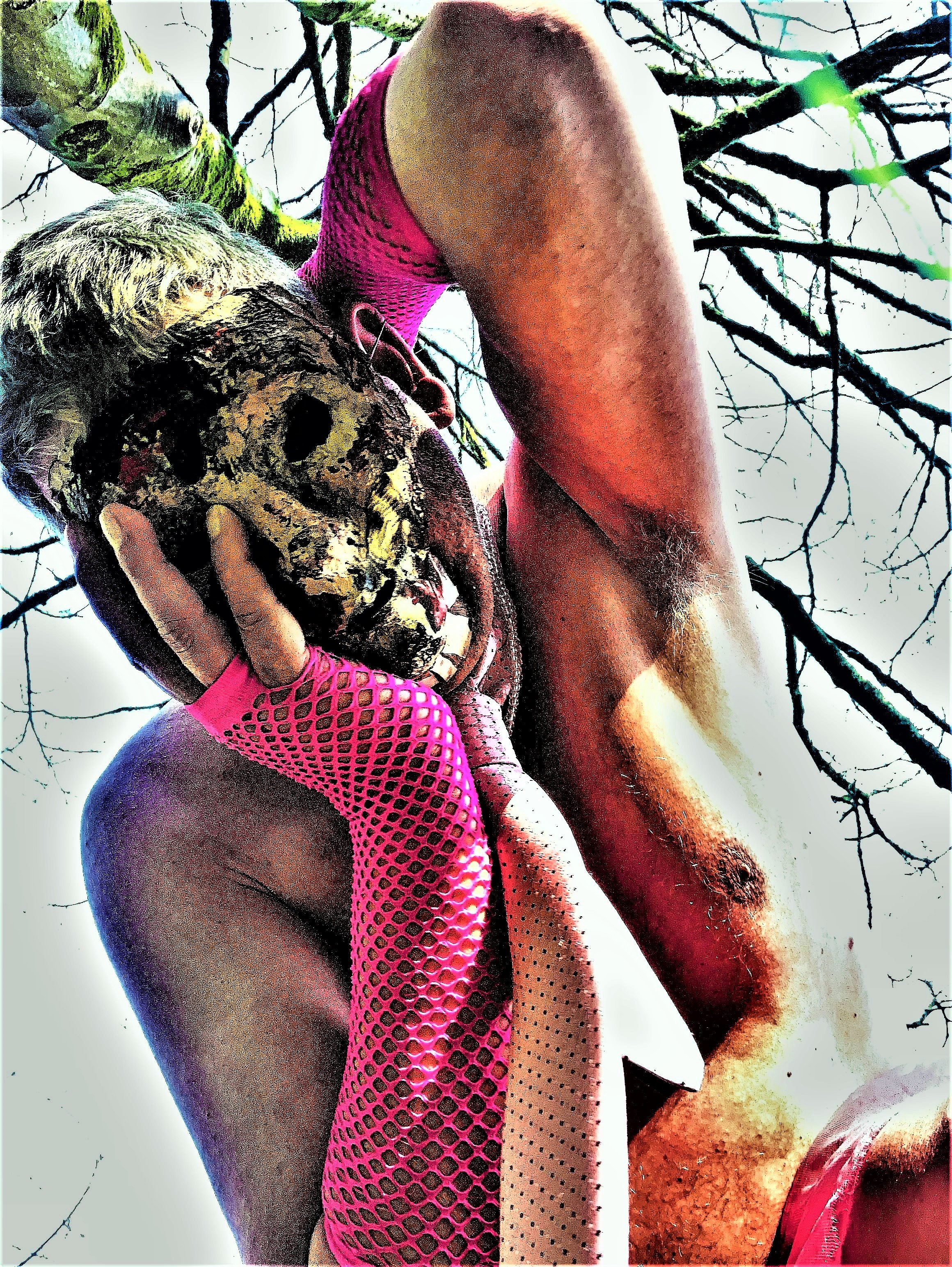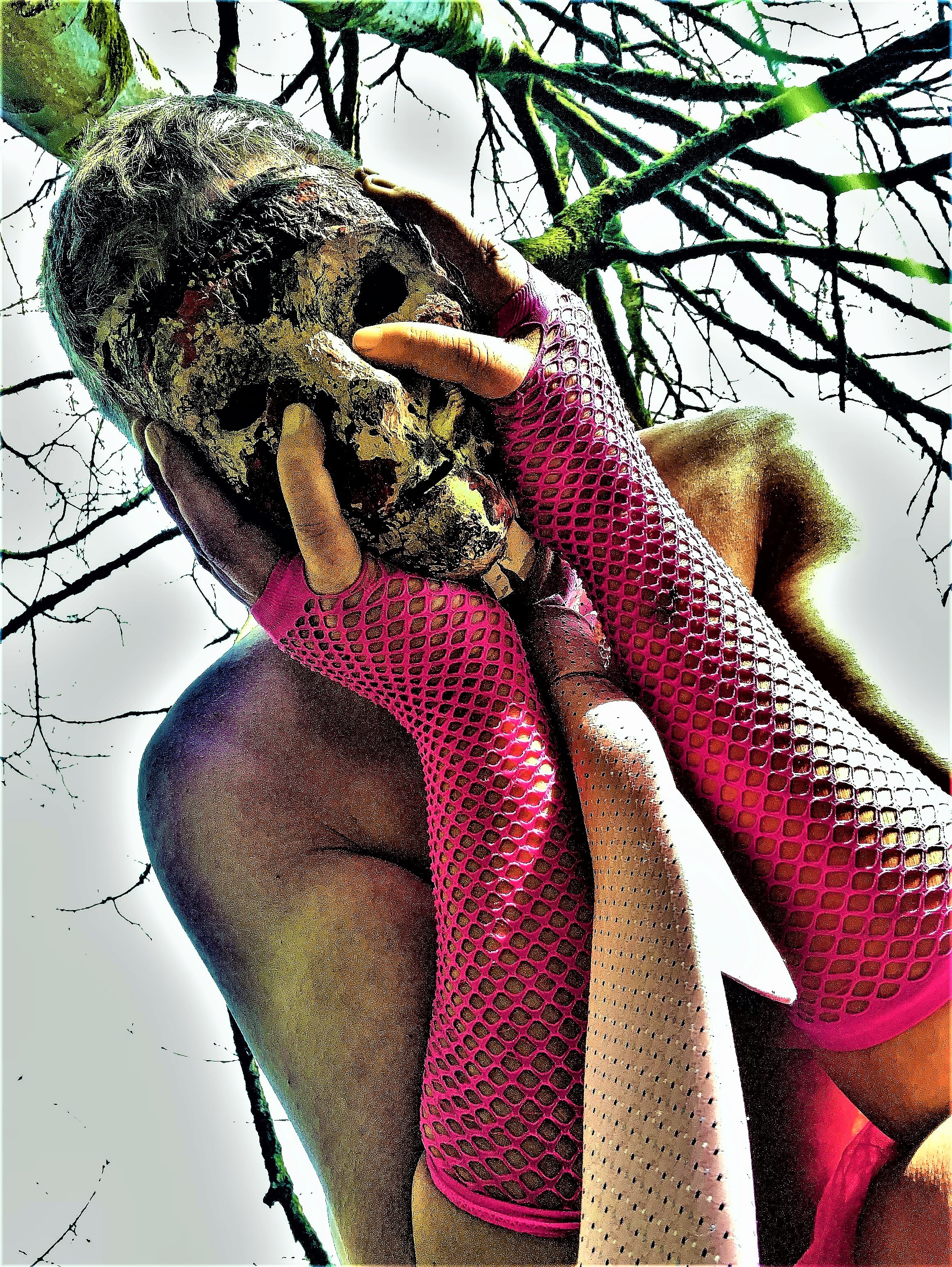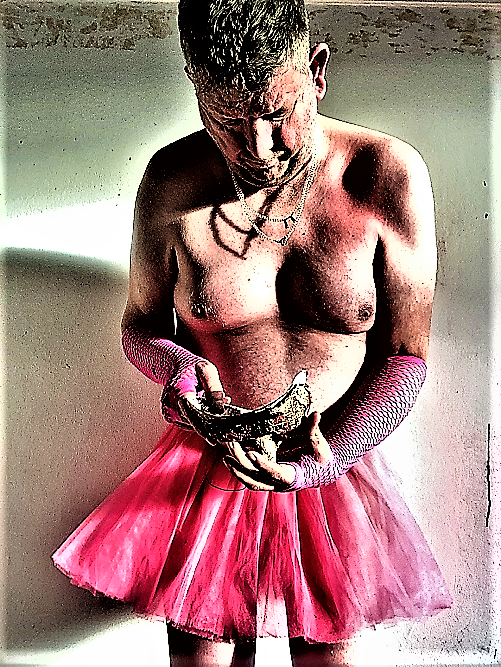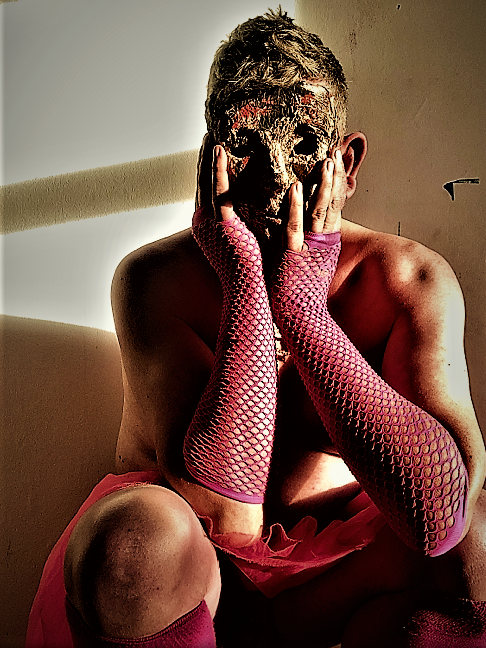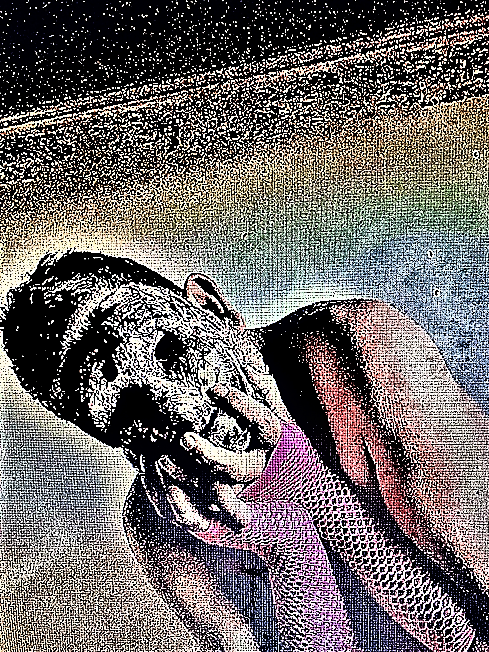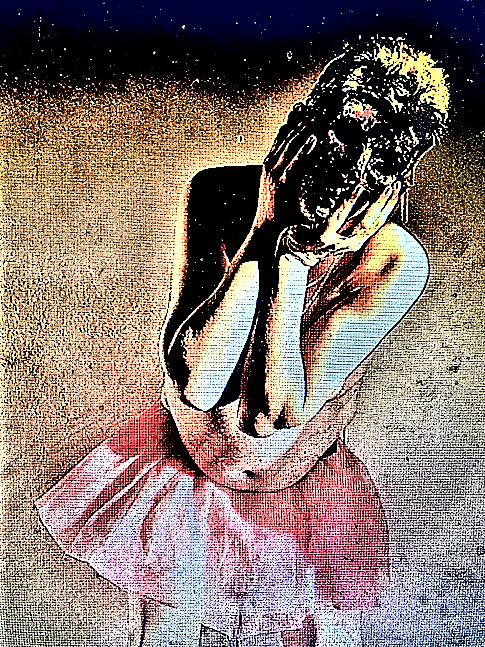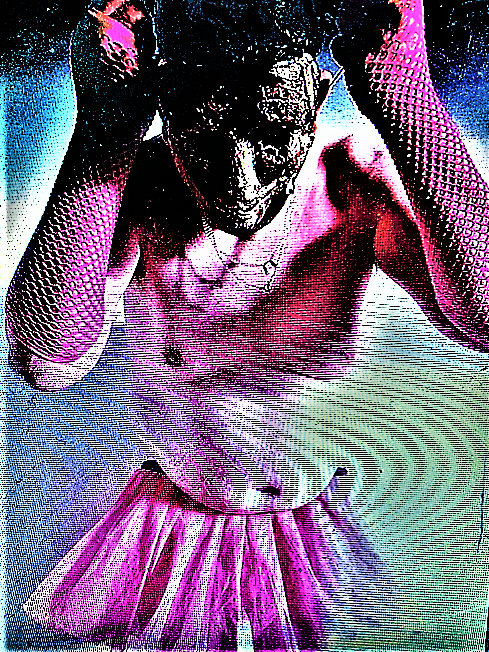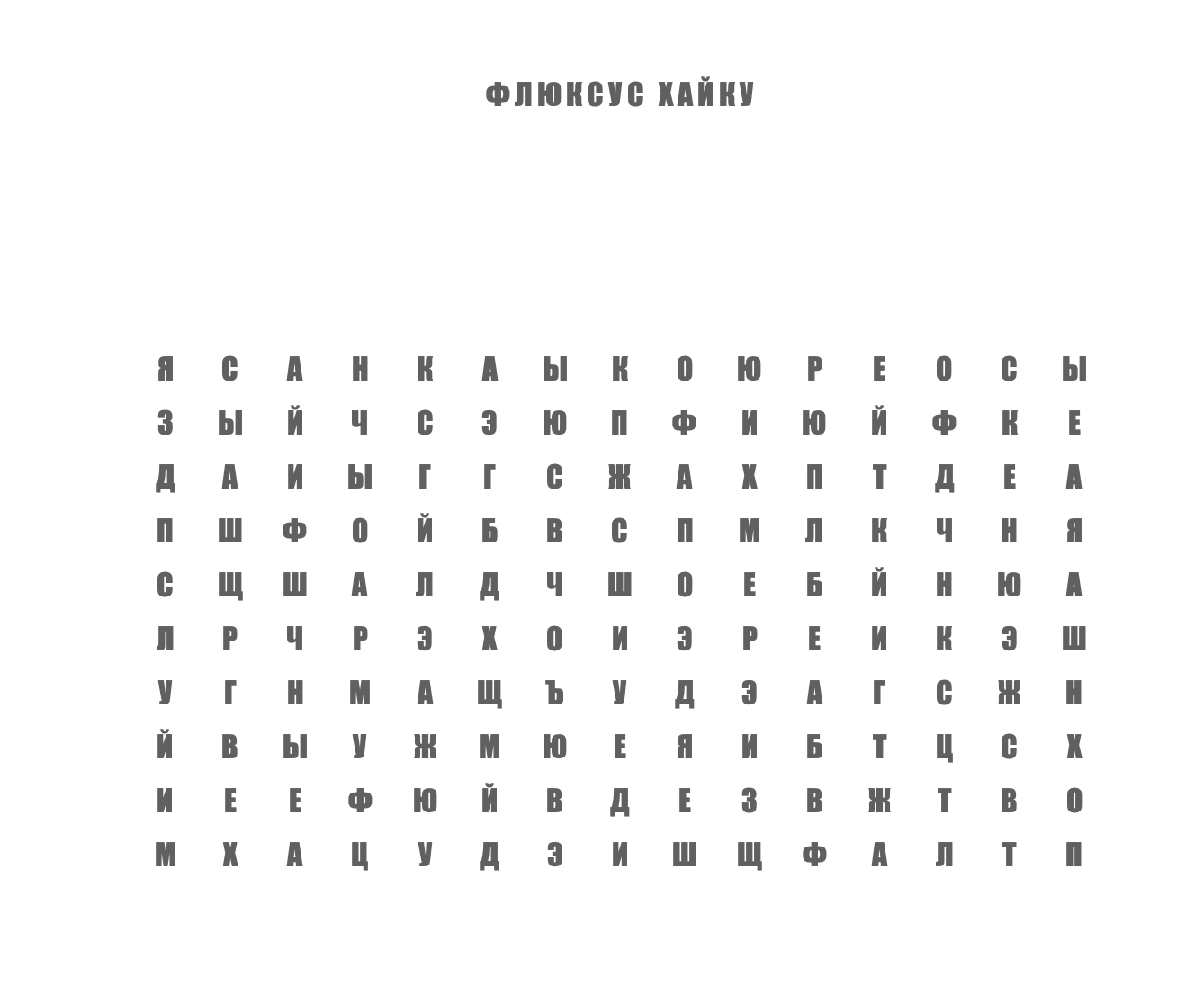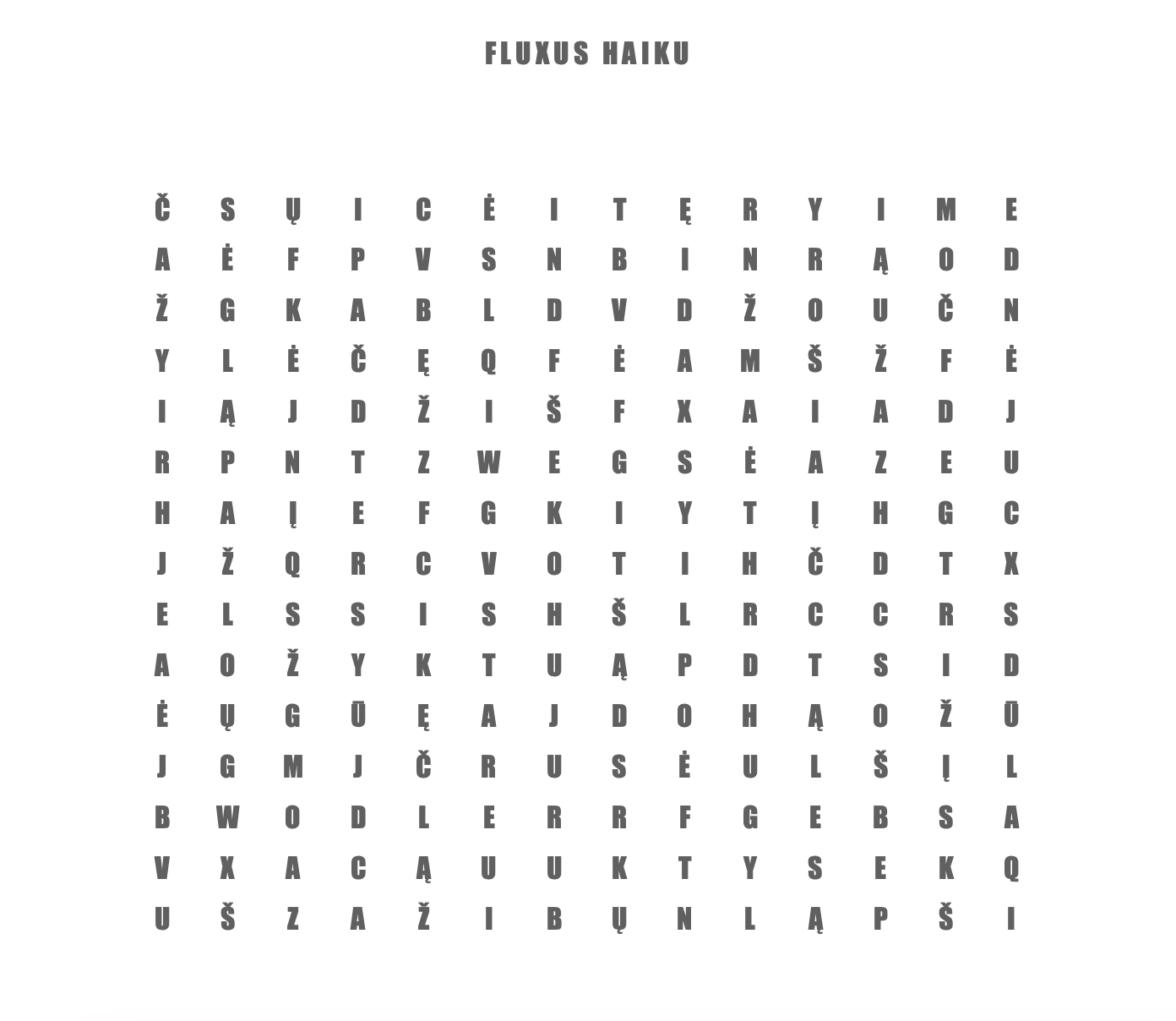This month we look at the alter ego, in Latin this means “Other I” Many artists and writers create these alternative selves, to be able to create work and act in a certain way that distances them from their original selves. But don’t we all create alternative selves when we meet different people? Don’t we show a different “side” to our family, than we would our friends or bosses? When we meet new people are we not guarded with how much we reveal?
An alter ego is an alternative version of us and has the potential to expand and explore an artist's identity, provide spaces to create physically as a performance or conceptually, aid creativity, and social mobility, and liberate the artist and their practice.
“From the idea that the self is not given to us, I think there is only one practical consequence: we have to create ourselves as a work of art”. Foucault (1976)
But how do you use this creative space and how do you manage your various selves? Do you and your other blur into each other or have you created boundaries and rituals that enable you and your alter ego to flourish?
We always have a mix of righting that is not always to them which really mixes it up, we also have a couple of continued stories so do take a look in last month issue and this for the full peices. so do take a look…
************************
Artist - JoJo
The first was a project I made in 2021, SELF PORTRAIT WITH MY INNER PIGGY, in which I shone a light on my battle with what I imagine to be my inner demo, that voice in my head that craves immediate gratification through sweet treats with no regard for the well being of my future self.
This series, in which I brought him to life with the help of a pig mask and some photoshopping, meant that I could visualise him and indeed share the frame with myself, at my most disgusting, naked and with the pig mask whilst also trying to look my most well turned out and handsome in my favourite outfits.
Being able to create these self portraits allowed me to reveal a body that I hate and an aspect of myself that I despise within a creative outlet that many who have seen the work consider to be my best.
For my second series, I once again brought into the light an aspect of myself that I normally kept hidden, with Diary of a 21st Century Musketeer. (2022) Since I was 19 and first read Cyrano de Bergerac by the playwright Edmond Rostand I have felt that lurking inside me is a more courageous, less politically correct, and more daring version of myself. In fact the opposite to my Inner Piggy.
I commissioned a costume for this series and rather than working with myself in the frame I cast others for my musketeer to shine with. As a little game, and a nod to the artifice I have included an object of the 21st century within each image for the viewer to discover.
In terms of a reference, I used the idea of a day in the life of my character after DIARY OF A VICTORIAN DANDY by Yinka Shoinibare.
Having brought these two alter egos into the light I am not sure if I will make more work with either of them, however I cannot bring myself to discard the mask or the costume so it is possible both will see the light of day again.
07890 876 378
****************
Artist name - Denise Startin
Website -https://denisestartin.co.uk/
Social media links-
https://www.instagram.com/startind02/
https://www.axisweb.org/p/denisestartin/
https://www.saatchiart.com/startind
Bio
Denise Startin is an artist, writer, researcher, and collector. Her current practice and research are organised around four routes, place, memory, history, and identity. She is particularly engaged with concepts of heritage, archaeology, performativity, representation, narrative, mapping, and embodied entanglements. Denise studied at the Royal College of Art and her practice encompasses movement, image, photography, printmaking, site-based interventions, installation, critical and performance writing. She uses various strategies of production including image and text, autobiography, polyphony, the intimate, and fact and fiction, a continually recurring relation is the tension between public and private realms.
Abstract
Dangling Modifiers is the document of an ephemeral performance capturing a subject in process, a momentary ecstasies where high on a hilltop in the Lake District I attempted to dance with Paul Klee using his drawing Knotted 1920 as the performative score. I engaged in an improvised choreography whereby the drawing was translated into movement by falling, jittering, twisting, snaking, weaving and shimmying on a hilltop like a deranged walker. This performance was part of a residency where several bodies slept together in a village hall, and explored their structures, rhythms, touch, possibilities, limits, and their fragilities. This text is the only document of the performance.
“Dangling Modifiers”
‘How shall I most freely cast a bridge between inside and outside?’ – Paul Klee1
She needs a framework, a basic conceptual structure, fixed yet fluid, a suture, a space of exchange. Invitingly provocative, she explores how it feels to be confused and insecure. Breathing deeply, exhaling freely, searching for the clarity of an image rendered in the act of moving. Finding in the rhythmic structure of move[me]nt a series of progressive events where an uncertain smile gropes in the dark for a sub-conscious memory. She is making a spectacle of herself but she cares not, she has surrendered herself to the moment, falling softly like a feather into a chasm where chance dares to hope, to dream, to tremble at the merest prospect of touch.
She tried this dialogue with Mondrian but became depressed when she ended up goose- stepping at right angles, her body locked in an alien rigor mortis. She abandoned this course of inaction and went back to the drawing board so to ‘act in such a way that I can speak to you.’2 Slowly she traces his gestures with the pads of her fingers trying to get a sense of the performance, allowing the movement to find its own course.
—————————————-
1 Paul Carter, Dark Writing, Geography, Performance, Design (Honolulu: University of Hawaii Press, 2009), p.79.
2 Maurice Blanchot, Awaiting Oblivion, Trans. John Gregg, (USA: University of Nebraska Press, 1997), p.5.
The relationship with her body is inverted as this extremity becomes the locus of all sensation; her entire body now sits on the tip of her finger. This minute spot is suddenly electrified with an ‘intimate immensity’3, ‘signing on the body body longing.’4 Self-consciousness is elsewhere, she invests herself with a forensic energy looking for the cameo, the secret, the victim, here a perjured parrot under the skin looking for the ballad and the source. Her hands, autonomous, pick out some refrain buried deep within her core.’
Somehow he knows her even before she knows herself. Somehow she knows him even before she knows herself. She recalls the story of Butades, a miniature love story where a young woman distressed that her love was going away traces in outline on the wall, the shadow of his face thrown by a lamp, a substitute for the absent object of desire. This process of extraction is like drawing poison from a wound. He takes hold of her and attracts her, drawing her out of her presence. Hidden in plain sigh[t] privately she makes an appearance speaking from a place where she is not, where she knows not. She remembers The Diary of a Nobody with all those Cummings and Gowings on the threshold. Is she coming or is she going? [Pull yourself together! She disobeys this command; she likes the way it feels to be confused and insecure.] Is she drawing, writing, dancing or speaking? She can no longer tell the difference, she is not herself but poetry in motion, black milk in human form. Now his drawing is etched into the whorls of her finger, it feels like a mutiny in the air with no objective. She hovers like a woman uncertain of his convictions, unsure of herself, a shadow soundtrack of whispering grass kicking the air.
———————————————
3 Bachelard, Op.cit, p.183. This is Bachelard’s term for our imaginative capacity to inhabit a landscape internally.
4 Jeanette Winterson, Written on the Body, (London: Vintage Books, 1993), p.89.
5 Edmund Jabès, The book of Dialogue, Trans. Rosmarie Waldrop ( Connecticut: Wesleyan University Press), p.12.
‘To write’ he said ‘is not to set in black but be yourself the black where words sit.’6 She is unsure whether this is what he had in mind. This is how poems come to be, they are written in the blood, tiny corpuscles passing through arteries where oxygen flows.
Language has us all dancing in the room. It shoots, we jive. Rapid acts of teasing your desire gesture toward the sensual. As if submerged in water like a wet fish on velvet, it excites appetites. This subterranean muscle orders appearance, an anthropological analysis of bodily actions. Something stirs in the deep like a fish wriggling on a hook shooting like an arrow for the surface. A subcutaneous striation transforms into a red weal upon her face.
—————————————-
6 Ibid, p.78.
7 Winterson, Ibid, p.89.
8 Ibid, http://www.english.emory.edu/DRAMA/beckettnoti.html (accessed 23rd July 2012).
Suddenly she feels herself falling
———————-
9 Image reproduced from https://artvee.com/dl/drawing-knotted-in-the-manner-of-a-net/ (accessed 08/06/2011)
10 Mallarmé quoted in Philippe Lacoue-Labarthe: Typography, Mimesis, Philosophy, Politics. Chapter 2, The Echo of the Subject.
***********************
Ian Helliwell
Part two
Wynn Jones made several abstract shorts including Oodles of Doodles (1956), Raving Waving (1957) and Bellowing Billowing (1959), featuring experimental soundtracks created with magnetic tape and musique concrete techniques. In an at times excessively apologetic and self-effacing style, he contributed a two part feature, ‘Doodling in Picture and Sound’ for ACW magazine in May 1961. Drawing on his experience of making Raving Waving and Bellowing Billowing, he noted, “The fact that both films were awarded Oscars in the Ten Best competition just goes to show that life is very unfair for other people.” He went on to explain that his animations consist of “abstract visuals with concrete soundtracks... the visuals are all waveforms in various permutations and cycles of harmonic motion... the soundtracks consist of plops and gurgles put together in a rhythmic pattern.” Despite his exceedingly well-executed and professional approach, he still felt it necessary to declare, “My method - or lack of it - was wrong because it did not result in a unified and completely satisfactory film.” What he neglected to point out, however, is that Raving Waving was selected for inclusion in the International Experimental Film Competition at the Brussels World’s Fair in April 1958, amongst 12 other British entries in a field of 120 films from many other countries. A decade later at a major concert of electronic music in March 1968 at the Planetarium in London, Bellowing Billowing was played alongside work by Ernest Berk, Brian Dennis, Hugh Davies, Roberto Gerhard, and Peter Zinovieff - some of the key players in British electronic music in the 1960s.
The 1961 ACW article contains strong encouragement for readers to experiment for themselves with musique concrete. For Raving Waving, Wynn Jones used only the basic equipment accessible to virtually anyone at the time - namely a single reel-to-reel tape recorder, on which he recorded and manipulated the sounds of running water; an alarm clock bell; tearing paper; striking of biscuit tins; pulling of sticky tape and various other domestic noises, demonstrating that ingenuity and imagination were the keys to overcoming a lack of sophisticated equipment. His experiments with synthetic sound continued into the 1960s with photographing images - exposing them directly onto the soundtrack portion of the film. By filling the gate of his 16mm camera to widen the exposure beyond the normal picture frame, opened up the film’s soundtrack area. Through masking part of the lens and rewinding the film, the image, and sound could be photographed separately frame by frame. He made a series of cards depicting waveform images corresponding to different tones and photographed them onto the film’s narrow soundtrack strip. Norman McLaren had earlier used this same approach for his anti-war, pixillated animation Neighbours, which won a real Hollywood Oscar in 1952. The resulting renown meant the film was widely seen by the general public, and being without dialogue or sound effects, the photographed synthetic sound was brought into the foreground, revealing it to a mass audience at a very early stage in the development of electronic music.
McLaren, born in Stirling, Scotland in 1914, is a key figure in the development and dissemination of synthetic sound, building on the pioneering work of several experimenters in the Soviet Union and Germany during the 1930s. In Britain, Jack Ellitt - a close colleague of Len Lye after they both emigrated from Australia to London – developed film collage and cameraless drawing of sound on celluloid in the first half of the 1930s, just as Lye was working on his earliest abstract shorts for the GPO Film Unit. McLaren was also at the GPO and made a drawn soundtrack for the documentary Book Bargain in 1937, although this was left off the final film. His animated sound experiments first came to fruition once he’d emigrated at the outbreak of World War 2, first to the USA and then Canada. The films Allegro, Scherzo, Dots and Loops were made in New York, driven by a lack of funds to draw both the picture and sound onto already exposed film stock. In 1941 he was invited to join the National Film Board of Canada (NFB), where he established the animation department and remained in the enviable position of working on any project he chose for the rest of his career, receiving the full support of the NFB along with their technicians and facilities. His films were often breezy and lightweight, with twee titles such as Hen Hop; Hoppity Hop; and Fiddle-de dee. Nevertheless, the shorts Mosaic (1965), and Synchromy (1971), did step firmly into experimental territory, and display a brilliant, abstract audio-visual synthesis, with Synchromy featuring the same images photographed for both picture and sound.
While McLaren received international acclaim for his state-funded and most often collaborative films, Wynn Jones plowed on alone, operating independently, positioned part-way between the amateur and professional worlds of film and music. In 1961 he lectured at the recently opened Centre of Sound in Soho, London, concerning experimental film and music making, two weeks before a lecture on a creative sound recording by the Centre’s technical director FC Judd. The pair had previously met at an awards ceremony for a competition run by the Tape Recorder magazine in 1959, where they had both won prizes - Wynn Jones for his experimental sound piece, Music to be Heard for its Own Sake. Amateur Tape Recording (ATR) magazine under the editorship of Judd, sent a reporter to the Hampstead flat of Wynn Jones in early 1961, to highlight his inspirational work with electronic music. The resulting article gave a compelling insight into the possibilities of synthetic sound on film, as well as experiments with magnetic tape. In January 1967 BBC2 television broadcast the last in the series Making Home Movies - seven programmes comprising a beginner's guide to cine photography. This edition was subtitled Fresh Fields and featured ACW editor Tony Rose, and Stuart Wynn Jones as a guest discussing new avenues that cine film enthusiasts might wish to explore.
Filmmaker Hazel Swift born in 1921, was a member of the Grasshopper Group and worked as a continuity girl in the film industry. Starting in the late 1940s, she was involved in a variety of British features including Night and the City; Grip of the Strangler; Fiend Without a Face; and The Haunting. She directed her own short films, The Christmas Play (1959), and Midsummer Music (1960), and in 1963 made The Shirt Factory, shot at Markfield secondary modern school in North London. The idea for the film had developed after a visit by some of the pupils to a local factory, where the monotony of the production line was incorporated into a Music and Movement lesson by their teacher Marjorie Sigley. She encouraged a performance at an end-of-term concert given by the children, where its potential for development into a short film was recognised, and the Grasshopper Group was approached. Hazel Swift took on the role of director; the children performed pop music played by the George Ferguson Group, while Wynn Jones created musique concrete sequences, contributing to a stylised and highly entertaining film.
Hazel Swift and Stuart Wynn Jones were married in 1967. During the 60s he moved into the professional animation field, employed by Halas & Batchelor, Britain’s biggest cartoon company, and worked on various projects including the animated series, Evolution of Life. His output of personal experimental films and music from the 1970s onwards is less well documented than his earlier period, though he made the shorts Mercurious in 1977 and Organic Canonic Icon in 1981. His film Duo from 1975 was scored by composer Gordon Jacob, who had earlier composed the music for Swift’s The Christmas Play, and in September the following year Wynn Jones presented The Magic Mirror, “a program of his work in all its variety”, at the Arts Centre in Lichfield, Staffordshire. Commercial jobs continued, including the creation of titles for the Gary Glitter film, Remember Me This Way, and in 1983 he penned an article for the international quarterly, Animafilm, discussing work with music and the moving image. Details on the final phase of Wynn Jones’ life are sketchy; he died in 1991 and Hazel Swift died the previous year, and it appears the couple had no children. It remains unclear what happened to their own archive of films and audio tapes.
The position of amateur experimenters - rarely acknowledged by exhibition curators or film programmers in the professional sector - is commonly one of obscurity. The dividing lines between amateur and professional, artist and hobbyist, are blurred, and it is often down to the maker of a piece of creative work to decide whether it is positioned as craft or art. This can determine the context in which it is displayed and appreciated, and the reputation and value that it may then accrue. Outside support and funding also have an appreciable influence – lone mavericks and creative explorers working independently are often sidelined, simply because they have no one to champion their cause. The story of 20th century hobbyist experimentation has been under-appreciated, poorly documented, rarely presented to a wider audience, and generally ignored. The story of Stuart Wynn Jones is symptomatic of the output of many experimental amateurs. He applied his talents to produce worthwhile results, received significant acclaim in his heyday, and then over a period of years his work fell into a state of complete neglect. Nonetheless, with an acknowledgment of the film and music established, research on Wynn Jones and many other overlooked figures can be undertaken, perhaps forcing academics and historians to take a more rigorous interest in this area.
Sorting through some old VHS tapes in March 2021 containing material recorded off the TV, a strikingly colourful animation that had appeared on the Old Grey Whistle Test in 1974, was rediscovered. It was used to accompany the track 'You Am What You Am' by Canned Heat, from their One More River to Cross album, and when it was broadcast again a couple of decades later as part of a compilation of Whistle Test clips, it was a tantalising sequence, but at the time impossible to place where the animation originated. Much independent research has been undertaken since that spot of home videotaping however, and a clue to identification was contained in a 1960 issue of ACW magazine, which included an article on the 1959 10 Best Amateur Films of the Year awards. Displaying three grainy black and white postage stamp-sized images from one of the winners, these could be recognised as matching the film from the Old Grey Whistle Test - which is in fact a sequence of Raving Waving by Stuart Wynn Jones, originally featuring his own musique concrete soundtrack. Hopefully, further discoveries will be made in the years ahead, to uncover much more about the life and work of this fascinating, underappreciated character, and his critically overlooked legacy of electronic music and experimental film.
Ian Helliwell. June 2012; revised and updated May 2020, final additions December 2022
************************
Artist name - Jimmy Basura
Social media links
https://www.wolfnotecollective.com/
https://www.instagram.com/wolfnotecollective/
Bio
JAMES WESLEY NICHOLS is a writer, artist, musician, and filmmaker from Houston, Texas, USA. "Jimmy Basura" is their pen name/alter-ego.
Article/Essay Title
Alter-Egotism
Abstract
Alter-Egotism is an art from, a form of poetry. The poet, sensing the intrinsic material connection between all things, the tenuousness, the ephemerality of all boundaries—especially individual identity—breaks down his/her sense of self into components, then reassembles these into new structures. A working definition of Alter-Egotism is the creation of a masque or alternate persona or personae for oneself for the purpose of executing an artistic task or accomplishing some poetic objective. As an artform the intended outcomes are concrete objectives such as performances, paintings, sculptures, films, poems, books, performed in the guise of someone other than the self. The ultimate goal of all works of Alter-Egotism is an imitation of primordial cosmic unity through the harmonization of form and formlessness.
ALTER-EGOTISM BY JIMMY BASURA
Alter-Egotism is an art form, a form of poetry. The poet, sensing the intrinsic material connection between all things, the tenuousness, the ephemerality of all boundaries—especially individual identity—breaks down his/her sense of self into components, then reassembles these into new structures. S/he may also combine those parts with parts from other characters, real or fictional. This type of poetry is akin to a hybrid of fiction writing and acting, for the poet creates the alter-ego as a fictional character, complete with physicality, history, mentality, preferences, and so on, and then embodies that character to pursue some poetic goal.
Actors practice a form of this technique, but Alter-Egotism goes further than acting because its purpose is beyond the portrayal of a character in a film or play. It is the extension of character into the dimension of the real-world acts that such a character might perform, presented in a way that blurs reality and fantasy. The characters designed by an Alter-Egotist are subjectively verisimilitudinous, but often stretch or transgress the boundaries of credulity.
The Alter-Egotist inhabits the mind, body, and soul of his/her creation and performs various acts in this guise, ultimately presenting the work to an art-consuming public. In this way, Alter-Egotism is a type of performance art.
Alter-Egotism is nothing new. The form has its roots in Greek ritual ekstasis, in stage and screen acting, particularly sketch comedy, in performance art and 1960s Happenings, and especially in art hoaxes such as that perpetrated by Paul Jordan-Smith who in 1924 posed as Russian “Disumbrationist” painter Pavel Jerdanowitch and fooled art critics for three years.
But Alter-Egotism pursues other goals than these forms and is just as much a result of the criminal with his/her alias, the undercover cop, the double agent, the doppelganger, the evil twin, and the witness protection program. Moreso than acting or performance art, the Alter-Egotist practices deception as a set of techniques rather than an objective.
One of the Alter-Egotist's primary tools in the creation of character is the archetype, partially in the Jungian sense, but more so as the product of the philosophy of The Stranger.
The Stranger is the prototypical cosmic being. Since the initial cosmic cataclysm known as The Shattering, the moment when matter and energy were explosively propelled away from one another, all beings in the universe have been in a state of Estrangement from one another. Inevitably, all sentient beings, all living things have been endowed with Desire, a longing for the lost primordial Unity that existed prior. With consciousness, all sentient beings are on some level aware of their estranged state. Thus, all living beings are Strangers.
The Stranger manifests in various archetypal forms, all seeking the Unity they can only achieve through Alter-Egotism. Strangers never become whole within themselves, and never truly merge with other Strangers, in spite of their manifold efforts, the most obvious of which is love.
Among the archetypes of The Stranger, the Alter-Egotist finds particularly useful the Quixote, or the Quester, the seeker of some fine Platonic ideal that does not correspond with incarnate reality. Also frequently encountered are The Ghost, The Voyeur, The Vampire, L'Enfant Terrible, the Femmes, and Hommes Fatales.
But prime among the archetypes is the Shape-Shifter, for the practice of Alter-Egotism is a deliberate imitation of the Were-Wolf, the emergence of the chaotic brute which is the physical essence of all incarnate souls. The Alter-Egotist uses his/her technique to bring out latent aspects of their own bodies and minds, harmonizing them in an attempt at the recreation of Unity. The harmonized, unified soul of the alter-egotist thereby finds truth and wholeness (otherwise unachievable) in his/her deception.
In summary, a working definition of Alter-Egotism is the creation of a masque or alternate persona or personae for oneself for the purpose of executing an artistic task or accomplishing some poetic objective. As an art form, the intended outcomes are concrete objectives such as performances, paintings, sculptures, films, poems, and books, performed in the guise of someone other than the self. The ultimate goal of all works of Alter-Egotism is an imitation of primordial cosmic unity through the harmonization of form and formlessness.
*****************************
Artist - Shaun Caton
Part Two: The Catharsis of the Crumb.
The scrutiny of tiny things is magnified in the dream zone. Dust on a window ledge, a dead moth, golden and hirsute, falls to the feet of the hooded and veined scapegoat, to be imbued with new life as a ghost in a private ceremony of the spiral. Even a crumb, a meal to a mouse, is a universe to the expansive eye that gobbles everything up in its radius. I call these moments punctum – fissures in time – a breathing point in a sentence without end. In the warm belly of the museum, that cultural cocoon, my dream meanders hesitantly over the grisly, frozen contents of a plastic bag: severed cock’s heads, their glassy, sightless stares, recall a time of great darkness and their spirits yearn for illumination on the replacement cave wall in the form of shadows scattered by the fused rays of flambeaux. In this gallery, we see the re-enactment of a barbarous rite, in which a scintillating blue powder is mixed with copious spittle, and applied to partition screens with much brushwork, gusto, and blow power. As the cocks cannot speak to us, a coterie of part-time prehistoric groupies have assembled and clack river stones together, ululate in unison, making bird-like trilling noises. This is Top of the Pop’s stone age style. Many pictures are born in a spatter of brownish blood as if shat from some ignominious orifice. Beaks scrape and chafe at the panels, tapping out an arcane coda for the painted stones, with their rattling noughts and crosses, dots, dashes, and wavy lines. It is extraordinary to note that many of the Mesolithic painted stones found in the Mas d’Azil cave in France, during the 1920s/30s were faked for mischief and financial profit. Reimagining an Ice Age Morse code? Underfoot, there are spent paint tubes squirting their manna all over a buckled board like the penises of fearsome beasts, long extinct and sandwiched in the proverbial permafrost. Some of the paint doubles up as shit, and smeared into gobbets, is thrust greedily into the mouth. Someone is laughing hysterically, but this is the laughter of exclusion and embarrassment, not mirth. The last time anyone laughed in a situation such as this, was when an undernourished, German performance artist (Egon Schrick 1935-2015), attempted to eat one of his own paintings, by tearing it into strips and chewing it into viscous paper pulp. Few would imagine such an event let alone witness it. Eating one’s own art definitely lends the work credibility, but may cause some digestive tract problems depending upon (a) the subject matter of the artwork and (b) the medium it is painted in. The eschewing of a heinous capitalist ideology, and the forsaking of preciousness and elitism, makes for an invigorating stance on the ephemeral transience of all things, including the chicanery of the art world when viewed as an edible commodity. This lends a whole new significance to the expression, having the stomach to be a struggling artist. Artists have crucified themselves, sat in baths of rotting meat, thrown up in feigned acts of political revulsion, and canned their own excrement for its weight in gold, so why not make a hearty repast from a painting or drawing? In the world of the Tuber Matrix where dreams merge with memory and actions fold into gestures, anything is permitted so long as it is not phony or revisionist. Even those who tell of witnessing uncanny events, such as the mischievous, lanky Scotsman in Serbia, who recounted a story that he had stared at an oyster shell on the banks of the Danube for many hours one summer’s day, without the barest visible movement or flicker of facial expression, much to the fury of a local thug who taunted him, and eventually swung him a punch in the mouth. This is the kind of ritual that is powerful and evocative of primordial regression therapy in the zone. People who do not know what else to call it always refer to it as the ‘zone’. For the most part, I prefer oral and anecdotal histories of performance art to actually watching it. Living the event through somebody else’s faltering description of stopped consonants is rather like attempting to cross a fast-moving river on slippery stones. How much can they tell you before you invariably slip and are carried away by the current? In outlining this escapade into the realm of the outré I am in danger of skirting around the perimeter of what constitutes a dream melting into the everyday. The story about the oyster shell was recounted to me by the performance artist who made the action on the river Danube. Truth lies in such cases.
In terms of the crumb, that inedible, meager morsel, I have recently arrayed a collection of tiny trophies: the exfoliated skin of a wart head, a rolled ball of cuticle clippings, an eyelash with a dried chunk of sleeping dust attached, cerumen blackened with age, excavated from an ear during a period of sloughing off. These reside in a matchbox stripped of its label, marked ‘specimens’, and await application in the next ritual action. Indeed, the ancient Romans collected tears in glass vials to show how much they missed their loved ones after their deaths. In a similar manner, humans accrue the residual by-products of their physiognomy and examine them from time to time, rather like a tramp will admire his turds after much grunting and straining during defecation, delighting in their volume, plasticity, and their incomparable grossness with ribald abandon! The perpetually self-reinvented, ‘shock-horror’ performance artist, Stuart Brisley, (b.1933 -) has fashioned a successful career out of making papier mache stools, as ‘an investment’ he claims – although nobody knows what he is investing fake models of crap in or for. I recall meeting with the great, Emeritus Professor of Shit once, back in the 1980’s and he introduced himself to me as an ‘historical figure in the world of performance art’ and added, ‘Perhaps you’ve heard of me?’ eagerly anticipating some form of psychopathic lionizing. One could be greatly impressed with his ability to concoct life-like pools of liquid diarrhea from pulped newspapers with a splosh of curry coloured paint. To those of us in the trade this is colloquially known as a dose of the squitters. Decades of mind-numbing, number crunching in the Slade School of Art in London, have no doubt, paved the way for this most radical of British artists to explore his own scatology under the somewhat windblown umbrella of the Museum of Ordure. Nice work if you can get it – as they say. I know of one other active performance artist with whom I am on more personable, less hierarchic terms, who has utilised his own fingernails, snot, pubic hair, and scabs of dried food scraped from the kitchen hob, as integral components in a microcosmic theatrical presentation. These preoccupations speak of witchery and fetish libation in non-western cultures. In anthropological studies the collection of unwanted body particles reinforces the magical potency of the action, imbuing them with supernatural properties barely understood in today’s gadget-obsessed culture.
An incomplete conclusion: The migration of maggots
I recently assembled a stinking plethora of desiccated fish heads from the beach, placing the brittle husks of carp, pike, and other unidentifiably hideous specimens in a zip-up holdall together with a gel air freshener to ameliorate the stench. Naturally, my attentions turned to other matters, and I soon forgot about the bag sitting in my basement studio room, emanating the suffocating odiousness of charnel decay and a hint of the sea. On inspection, I noticed a few squirming maggots, plump, wrinkly, and penile, inching away from my probing finger, slipping through the perforated lining into the corners of the bag. At the time, I had not appreciated that these heads might have a few live maggots chomping through what little in the way of salvageable meat, might remain on these gruesome spoils. Deftly, I plucked them out and deposited them in the sink, where I flushed them down the waste pipe by turning on the faucet, with a whining judder. A miniature maelstrom would do the job of ridding me of these detestable organisms, so alien and abhorrent to our sanitized day-to-day existence. To make sure that they would not crawl back up the pipe (or worse still, clog it and propagate inside the U-bend) I poured some bleach and hot water down the reeking hole. The maggots ended their pipe dream by being spouted out onto the drain cover, thickly encrusted with a mulch of rotting leaves, mud, and filth. Instantly, the paintings of WOLS, (Wolfgang Otto Schulze 1912-51) with all his biomorphic hemorrhoids proliferate my mind. When I looked inside the outer pocket of the holdall, I saw that a colony of maggots had migrated from the inner chamber through a screen into the side pouch. Again, I removed them one by one, with considerable difficulty as they attempted to sneak into the underlining and evade my grasp by casuistry more than intention. I contemplated what a delectable repast one of these grubs would make for a warbling blackbird; a choice meal of gratitude for its song. It occurred to me that this is how life ends, in shit and visceral disintegration, writhing like those maggots plopping through the slats in the drain mat down into the foulness below. Much of this meandering excuse for an article skirts around these murky moments of consciousness punctuated by my discoveries and epiphanies triggered by happenstance encounters with all life’s minutiae.
Notes:
*Grimlich – Medieval word for horrible.
*****************
STEPHEN NICHOLAS - artist …
I wouldn't say that my alter ego is a force field more that certain subjects I write about, feeling 'othered', being bisexual, fear itself, suit me to appear in a different form. That said my words can often flow from the act of dressing up itself. There are also other things to throw into the mix. Sometimes I'm simply posing one question: why/when do we lose the act of play and what is it to be an adult? When is the cut off point between child and adult? And whether we should stop being so bloody serious all the time! Return to the giddy and anarchic days of Tiswas.
Genesis
Back in 2017 I took part in an illustration project that an artist called Alyce Wood was running. Her project was about de-sexualising the human body and to discuss a statement: a body is just body. This is obviously a whole topic in itself. What I wanted to do was to create a zine which would examine how the male body is viewed. Dispel this strange idea often spouted that #MeToo has left men without an identity. That said the maleness that is beamed at us is often one of diametrically opposed extremes. From hunky dog walker your granny would like to borderline serial killer and beyond.
Recently I've been asking myself if I started off by asking the wrong question. Should it have been who am I? not what does a man look like?? That way it wouldn't have been so linked to that little thing between my legs. But a more wider conversation about gendered norms, socialisation and decency. What made me? Family and school? And is 'me' something that continues to change either by attrition or sheer will of not wanting to fit it. Admittedly I'm coming from a position of privilege. I can mess around with my image without fear of attack.
Outskirts
I've written about this before but my original zine morphed into a piece about the outskirts. This uneasy mix of industrial and natural. How although I love the countryside I feel lost there; almost a stranger. I don't feel comfortable unless I can see billowing chimney or graffiti lit hi-rise. Over time it became more about in between states. How we are fed dreams to pacify. And how things often only exist in a form for a second before they give way. Does that bring with it sadness or joy?
Looking back my words also came from the realisation that I had forgotten most of what had happened in my life. I don't say that in a troubling way more asking if we always exist in some kid of limbo. Wondering who we once were and who we will become. As a writer these plains interest me. What did happen, what I think happened and whether there is any harm is turning my life into non-fiction. Not to embellish but just to exist again.
Finding An Identity
I'm not sure if my alter ego stems from insecurities in defining myself as artist. Or a strange depiction of creative desire set as pantomime. At first my alter ego was simply faceless and my work considered. I don't think my alter ego is struggling to find form but it varies from ghoulish to feminine but in quite a camp / garish manner. In some ways I have become a sly dig at the 21st century. These ordinary lives we lead warped by social media facade. Our compulsion to wear masks.
There is no desire to 'perform' as the alter ego more frequently than as 'real me'. It may be something that I eventually stop doing. I've never been one to keep doing the same things as it would bore me to death. I am perhaps more outlandish as my alter ego and I often tie this in with the rejection of my catholic upbringing. Themes like sin, shame and denying our bodies. Or when it comes to art itself asking if the process has made us homogeneous? Practices geared towards community cohesion over self expression.
The Future
Perhaps my alter ego will become more malevolent? Maybe my alter ego will take on more and more of me? The fights of the backstreets. The romance. Each passing wasted year. Maybe it's best not to know? For now my alter ego will display the confusion of what it is to be mortal. A feeling of vacuum, magic and maybe self-destruction. If I'm honest I think my alter ego will eventually become permanently androgynous. It will become another stage like the years of hormonal teenage urgency.
There'll come a time I'll look back and try to make sense. I'm pretty sure I'll recognise that it was never about not wanting to be me. I'll realise we often need time and space to write about who we are. That balance of marred mirror image and cautious projection. I don't think my alter ego will ever come from pain in the physical sense, just adventure. The drive will always be to write about trying to squeeze myself into spaces that feel both alien or alienating. And becoming lost, ecstatic or enigma in the process.
*********************
Artist name - Bernardas Bagdanavicius
Social media links
instagram: https://www.instagram.com/b.bagdanavicius/
Bio
Bernardas is British-Lithuanian artist living and working in London, participating in international exhibitions since 1996 with artwork presented in the UK, Russia, Armenia, Portugal, Germany, Lithuania, USA.
Bernardas is author of Fluxus Haiku serial artwork.
Article/Essay Title
Fluxus haiku
Abstract
Fluxus Haiku is a serial artwork consisting of original poem which is encrypted and presented as alphabetical matrix. The poems are written in English, Portuguese, Russian and Lithuanian.
Fluxus Haiku Nr4 is a peace poem, written in Russian during the time of the war with Ukraine.
Artist name - Colin Lievens
Instagram account - @colinlievens
Website www.colinlievens.com
Description
My gender fluidity is very slow. I made this work to recognise that and recognise the way masculine Colin's clothes exist differently now.


